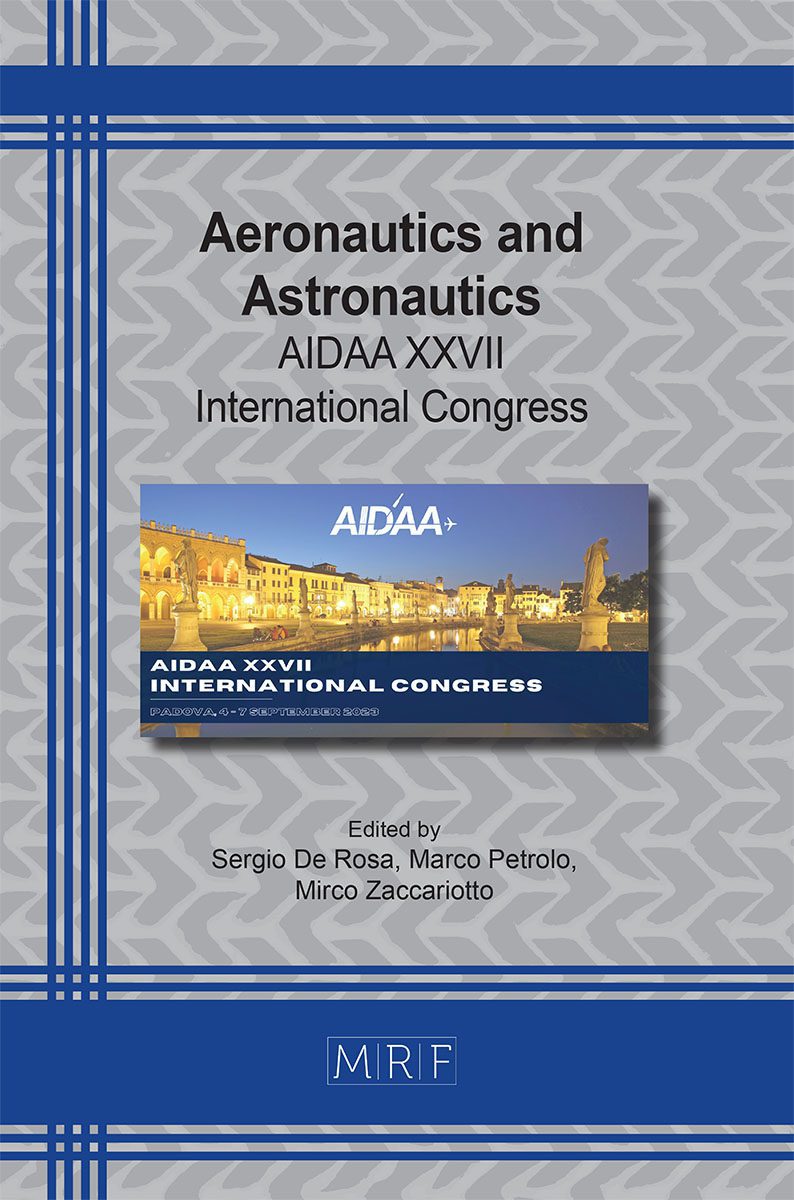A brief review of pilots’ workload assessment using flight simulators: subjective and objective metrics
Giuseppe Iacolino, Antonio Esposito, Calogero Orlando, Andrea Alaimo
download PDFAbstract. This study explores subjective and objective metrics to assess pilots WL, with a particular focus on the use of full flight simulators (FFS). The results show that FFS-based research demonstrates no significant differences compared to real flight experiences, highlighting the validity of FFS as a tool for studying pilots’ performance. However, further research is needed to understand the impact of other parameters on pilots’ performance, and to address human factor-related risks for enhanced aviation safety.
Keywords
Human Factor, Subjective Methods, Objective Methods, Full Flight Simulator
Published online 11/1/2023, 4 pages
Copyright © 2023 by the author(s)
Published under license by Materials Research Forum LLC., Millersville PA, USA
Citation: Giuseppe Iacolino, Antonio Esposito, Calogero Orlando, Andrea Alaimo, A brief review of pilots’ workload assessment using flight simulators: subjective and objective metrics, Materials Research Proceedings, Vol. 37, pp 754-757, 2023
DOI: https://doi.org/10.21741/9781644902813-161
The article was published as article 161 of the book Aeronautics and Astronautics
![]() Content from this work may be used under the terms of the Creative Commons Attribution 3.0 license. Any further distribution of this work must maintain attribution to the author(s) and the title of the work, journal citation and DOI.
Content from this work may be used under the terms of the Creative Commons Attribution 3.0 license. Any further distribution of this work must maintain attribution to the author(s) and the title of the work, journal citation and DOI.
References
[1] Kharoufah, H., Murray, J., Baxter, G., & Wild, G. (2018). A review of human factors causations in commercial air transport accidents and incidents: From to 2000–2016. Progress in Aerospace Sciences, 99, 1-13. https://doi.org/10.1016/j.paerosci.2018.03.002
[2] Masi, G., Amprimo, G., Ferraris, C., & Priano, L. (2023). Stress and Workload Assessment in Aviation—A Narrative Review. Sensors, 23(7), 3556. https://doi.org/10.3390/s23073556
[3] Mohanavelu, K., Poonguzhali, S., Ravi, D., Singh, P. K., Mahajabin, M., Ramachandran, K., & Jayaraman, S. (2020). Cognitive Workload Analysis of Fighter Aircraft Pilots in Flight Simulator Environment. Defence Science Journal, 70(2). https://doi.org/10.14429/dsj.70.14539
[4] Kramer, A. F., & Parasuraman, R. (2007). Neuroergonomics: Applications of neuroscience to human factors.
[5] Hart, S. G., & Staveland, L. E. (1988). Development of NASA-TLX (Task Load Index): Results of empirical and theoretical research. In Advances in psychology (Vol. 52, pp. 139-183). North-Holland. https://doi.org/10.1016/S0166-4115(08)62386-9
[6] Reid, G. B., & Nygren, T. E. (1988). The subjective workload assessment technique: A scaling procedure for measuring mental workload. In Advances in psychology (Vol. 52, pp. 185-218). North-Holland. https://doi.org/10.1016/S0166-4115(08)62387-0
[7] Oberhauser, M., & Dreyer, D. (2017). A virtual reality flight simulator for human factors engineering. Cognition, Technology & Work, 19, 263-277. https://doi.org/10.1007/s10111-017-0421-7
[8] Iizuka, N., Awano, S., & Ansai, T. (2012). Salivary alpha‐amylase activity and stress in Japan air self‐defense force cargo pilots involved in Iraq reconstruction. American Journal of Human Biology, 24(4), 468-472. https://doi.org/10.1002/ajhb.22247
[9] Watson, D. W. (2001, June). Physiological correlates of heart rate variability (HRV) and the subjective assessment of workload and fatigue in-flight crew: a practical study. In 2001 People in Control. The Second International Conference on Human Interfaces in Control Rooms, Cockpits and Command Centres (pp. 159-163). IET. https://doi.org/10.1049/cp:20010453
[10] Bilan, A., Witczak, A., Palusiński, R., Myśliński, W., & Hanzlik, J. (2005). Circadian rhythm of spectral indices of heart rate variability in healthy subjects. Journal of electrocardiology, 38(3), 239-243. https://doi.org/10.1016/j.jelectrocard.2005.01.012
[11] Fuentes-García, J. P., Clemente-Suárez, V. J., Marazuela-Martínez, M. Á., Tornero-Aguilera, J. F., & Villafaina, S. (2021). Impact of real and simulated flights on psychophysiological response of military pilots. International Journal of Environmental Research and Public Health, 18(2), 787. https://doi.org/10.3390/ijerph18020787
[12] Alaimo, A., Esposito, A., Faraci, P., Orlando, C., & Valenti, G. D. (2022). Human Heart-Related Indexes Behavior Study for Aircraft Pilots Allowable Workload Level Assessment. IEEE Access, 10, 16088-16100. https://doi.org/10.1109/ACCESS.2022.3145043
[13] Xing, G., Sun, Y., He, F., Wei, P., Wu, S., Ren, H., & Chen, Z. (2023). Analysis of Human Factors in Typical Accident Tests of Certain Type Flight Simulator. Sustainability, 15(3), 2791. https://doi.org/10.3390/su15032791
[14] Hörmann, H. J., Gontar, P., & Haslbeck, A. (2015). Effects of workload on measures of sustained attention during a flight simulator night mission.
[15] Zheng, Y., Lu, Y., Jie, Y., & Fu, S. (2019). Predicting workload experienced in a flight test by measuring workload in a flight simulator. Aerospace medicine and human performance, 90(7), 618-623. https://doi.org/10.3357/AMHP.5350.2019































